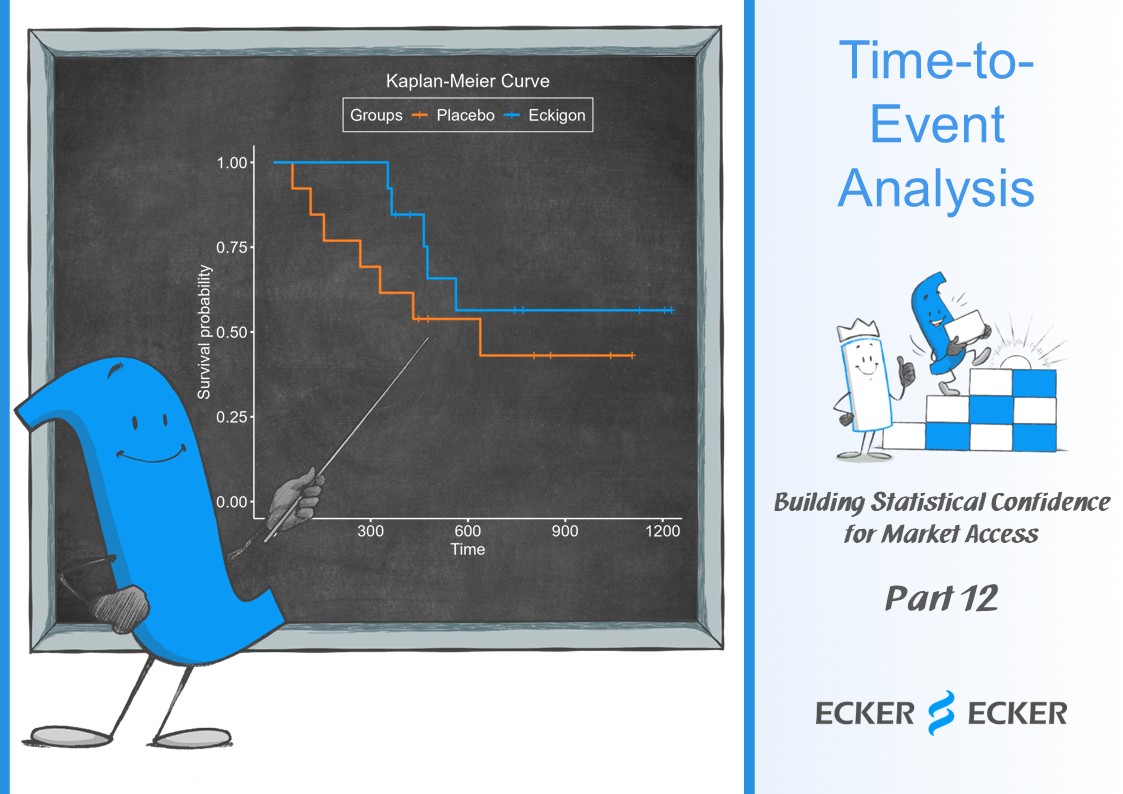Part 12: Time-to-Event Analysis

Analyze survival times with the Kaplan-Meier method!
In HTA we sometimes measure the time until a certain event takes place. For example, in an oncological study we might be interested in the survival time of the patients. But the event doesn't have to be something negative! We could also measure the time until a positive event, e.g. a patient gets cured. However, for simplicity we usually use the terms "death" and "survival". Let's see what statistical methods we can use in time-to-event analysis!
Challenges
⚠️We don't know when the event of interest will take place.
⚠️For some patients it might not happen at all in the observed period.
⚠️Some patients might be lost during the study, e.g. because they decide to stop participating.
Statistical Method
📊For calculating the survival rate we can use the Kaplan-Meier method. Every event that takes place defines a new time interval. For every interval we can count how many patients had an event. We can then calculate the conditional probability that a patient survives an interval if he has survived until the start of the interval.
📊If we don't have the time of the event for some patients (for one of the reasons mentioned above), we talk about censored data. We have to handle these carefully in our analysis, but this is not a problem when using Kaplan-Meier!
📊The survival probabilities can be nicely depicted in a Kaplan-Meier curve. From this curve we can easily read interesting values, e.g. the median survival time.
️
📢 Stay tuned and continue "Building Statistical Confidence For Market Access"